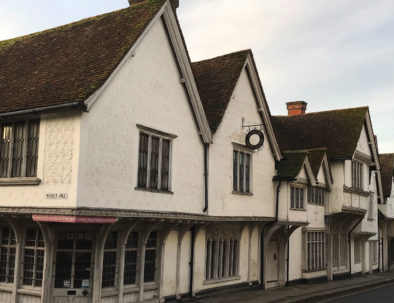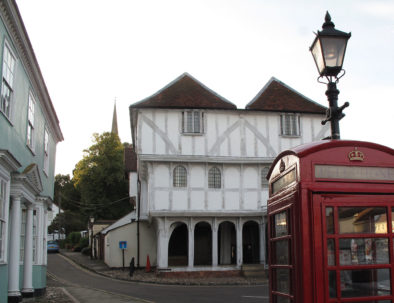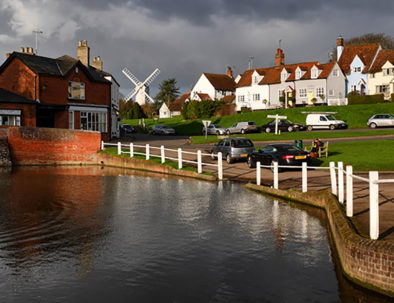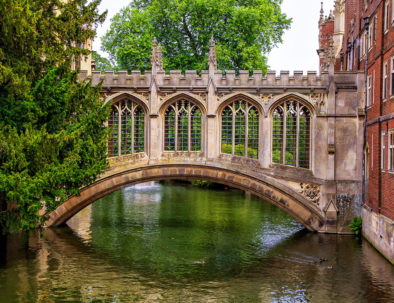Historic towns & villages
Here’s what our guests had to say about our surrounding towns and villages…








Saffron Walden (5 miles)
Saffron Walden is a 10 minute drive down the road from Piglets and locally know as ‘Walden’.
It enjoys not having an ‘off’ ramp on the M11 which allows this hidden gem to retain much of its historic charm and remain one of the finest examples of a market town in England as you can see by the market plan of the street names, e.g. Mercer’s Row, Butchers Row etc.
When Max was growing up here in the 60’s Walden still had its pig, cattle, poultry and general market but sadly today just a general market remains on a Tuesday and more importantly on Saturday when throngs of locals and visitors enjoy produce, local crafts to antiques, wet fish bar, cheese and charcuterie in the town square.
A panoply of different styles/ages of architecture all blend well together and the town is blessed with many independent shops many of which are long standing family businesses.
There is the ruin of our castle which dates to around 1140 and the largest parish church in Essex (although a church has stood here since 1130, the current version dates between 1250 and 1258); this dominates the town’s skyline with the tallest spire in the county at 183ft/56m.
There are two mazes in the town, one being the largest example of a turf maze in England cut into The Common dating from around 1699 and a more traditional maze is to be found in the beautiful Jubilee and Bridge End Gardens on the northern outskirts of the town.
The Old Sun Inn is a stunning example of the ancient artisanal craft of Pargetting which involves making intricate shapes in plaster – more and more this became a ‘signature’ of each craftsman. The Sun Inn was also headquarters of the New Model Army during the English Civil War, hosting none other than Lieutenant-General of Horse, Oliver Cromwell. There are private tours of the restoration project of part of this magnificent Grade 1 listed building, see our ”Museums & Days Out’ tab for details or click here.
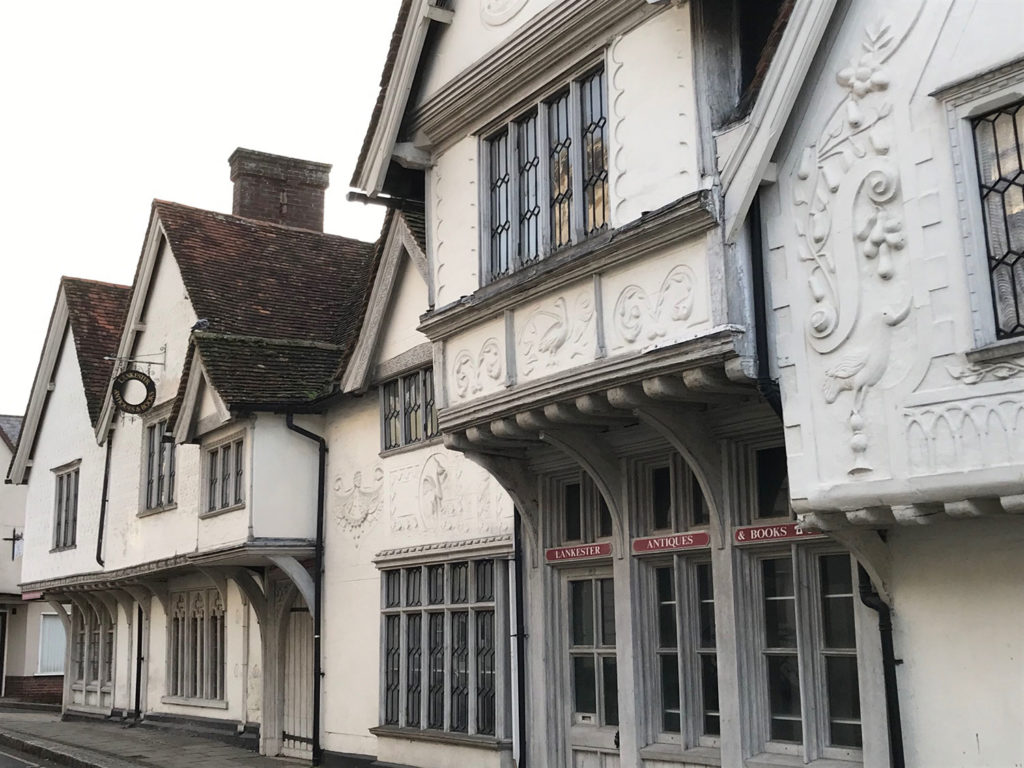
Just opposite and round the corner from The Old Sun Inn is our local museum and a little further down Castle Street one can find the Fry gallery showcasing local artists’ works.
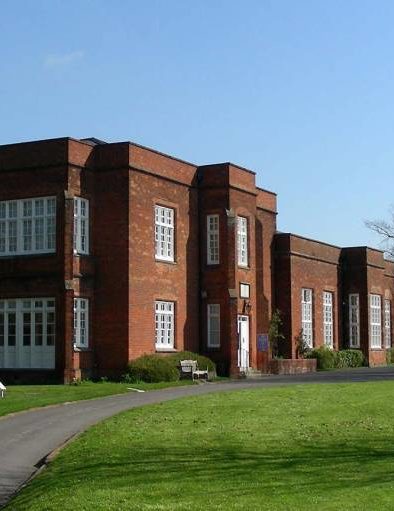
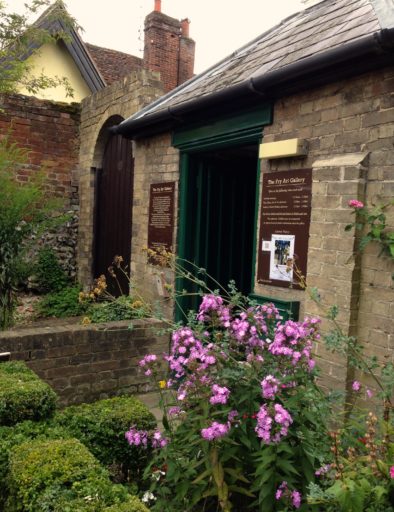
Here are some guides to Saffron Walden for you to download
Thaxted is listed in the Doomsday Book in 1086 and comprises mainly of Town Street which is part of the B184 which runs through Saffron Walden and onto Great Dunmow cutting straight through this small pretty town.
Often appearing as THE picture of an Essex ideal on numerous book covers, The Guildhall dominates the town with the even greater edifice of the parish church looming above. A classic scene that one would have hoped inspired Gustav Holst, who wrote The Planets whilst living in Thaxted and used the name of the town originally for the hymn that is now more commonly known today as “I Vow to Thee, My Country” and was sung at Winston Churchill’s funeral in 1965.
Holst was the inspiration for the annual arts festival that is hosted in Thaxted’s magnificent parish church of St. John, a huge church that stands testament to the great wealth this small Essex town once enjoyed and the equally stunning guildhall. In the 13th and 14th century’s, the town became a centre for cutlery (hence one of our nearby villages being called Cutler’s Green).
The festival runs in the months of June and July and includes classical, choral, chamber and jazz performances. You can buy tickets at https://www.thaxtedfestival.co.uk/
To the west of the church just past the Almshouses lies the beautiful and carefully preserved windmill built in 1804 by local farmer John Webb. For more information please visit https://www.thaxted.co.uk/index.php/tourism/places-to-visit/the-windmillleo.
Despite there being a “Dick Turpin’s Cottage” on Storey Lane just next to the guildhall, there is no evidence that Hempstead highwayman; Dick Turpin lived in Thaxted, although it is thought he may have taken an apprenticeship as a butcher at Vincent Duckett’s (now the arts festival window opposite the church) and then went on to open his own butchery back in Hempstead before his more lucrative career brought him back to the Thaxted-Saffron Walden road on horseback with flintlocks raised!
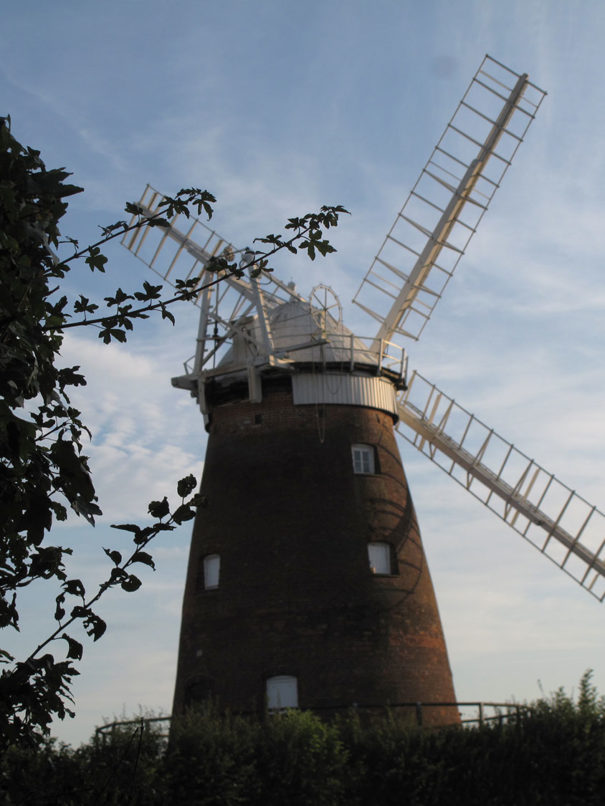
Thaxted Morris men
Thaxted has hosted the annual Morris weekend since 1927 on the last weekend in May with numerous sides from all around the country attending.
Morris dancing can be seen in Thaxted and the surrounding village pubs during the weekend but the special night comes on the Saturday when the mesmeric Abbots Bromley Horn Dance is performed at 10:15pm to a hushed crowd in the closed Town Street as dancers are led by a lone violinist from the church and down into Town street where mass dancing is performed in front of the Guildhall before returning up the hill to the parish church.
Radwinter – an ancient small church stands at the top of the Princes Well which is a small valley, sadly there were a number of lovely pubs here but these have disappeared over the years.
Hempstead – Home of the infamous highwayman Dick Turpin who was born next door to the Bluebell pub and then eventually he and his family moved next door. He learnt to be a butcher in nearby Thaxted before realising that robbery was much more lucrative and less hours! He was eventually hanged at York but not before making his famous dash from London aboard Black Bess, his favoured stallion. Just across from the pub hidden away up a small hill on the right, is the remains of a Cock fighting ring (chains to keep those excited wagerers at bay still hang).
Ashdon – spreading across the hills to the north of us and south of Cambridge, this little village not only used to have a railway line running through it for the local Major to get to London but also hosts a museum. In 1016 King Canute defeated Edmund II of England here.
Widdington – home to a prime example of Tudor engineering in the marvellously preserved Priors Hall Barn which is just on the right as you enter the village. Here you will find the Fleur de Lis pub where Chris, the landlord, will be sure to furnish you with good food and beer.
Sampford – hidden away at the back of Thaxted, this village has a history steeped in pagan practices and leads the way to one of the most visited villages in Essex, Finchingfield.
Debden – is home to a pretty parish church set down a small lane by the local school. It is also jointly with Wimbish, home to Carver Barracks which is home now to the 33 Royal Engineers bomb disposal regiment. During the second world was it was a famous fighter aerodrome for the US Eagle Squadron.
Bartlow – hidden within a wood as you enter the village on the right hand side up a narrow pathway (slow down or you will miss it) are the remains of three remarkable ancient burial mounds – certainly worth a look if you have never seen such a thing before? There is also a nice pub recently refurbished which has good food and beers here called, would you believe, The Three Hills!
Finchingfield – often touted as the prettiest village in Essex, this is an 8 mile drive from us and has a number of pubs and restaurants around the village pond and an 18th century windmill (try and avoid the weekend crowds by visiting during the week). Most famous resident is local Clavering lad, Jamie Oliver!
Slightly further afield
About 20-30 minutes drive are the lovely picturesque Suffolk villages of Clare, Stoke-by Clare, Cavendish, Long Melford and a little further, Lavenham. Antique and curio shops abound and a few nice places to rest and refresh at, namely the Black Lion in Melford; The Swan and The Great House in Lavenham. Also don’t miss a visit to Melford Hall. On this side of Suffolk, near Bury St Edmund’s (about 45 mins) lies Ickworth a National Trust treasure.
Newport, Essex
Ford Keeper's, Clavering
Arkesden,Essex
Clare, Suffolk
Long Melford, Suffolk
Cavendish, Suffolk
Bury St Edmunds
Newmarket Gallops
Lavenham, Suffolk
Founded in 1209 and granted Royal Charter by King Henry III in 1231 the dreaming spires of Cambridge University lie just half an hour to the north of us with a punt down the college “backs” a bucket list must.
Maybe a pint in the RAF bar of the Eagle pub with the wartime squadron numbers burnt by candles into the ceiling (including Max’s father’s Mosquito Pathfinder squadron, # 105) and where DNA was first discovered or a leisurely stroll around the village of Grantchester and a glass or two in The Rupert Brooke pub. The poet lived in the village but now the most famous resident is author and ex-Tory politician Jeffrey Archer. A strawberry cream tea overlooking the River Cam is a popular activity at The Orchard (but book well in advance).
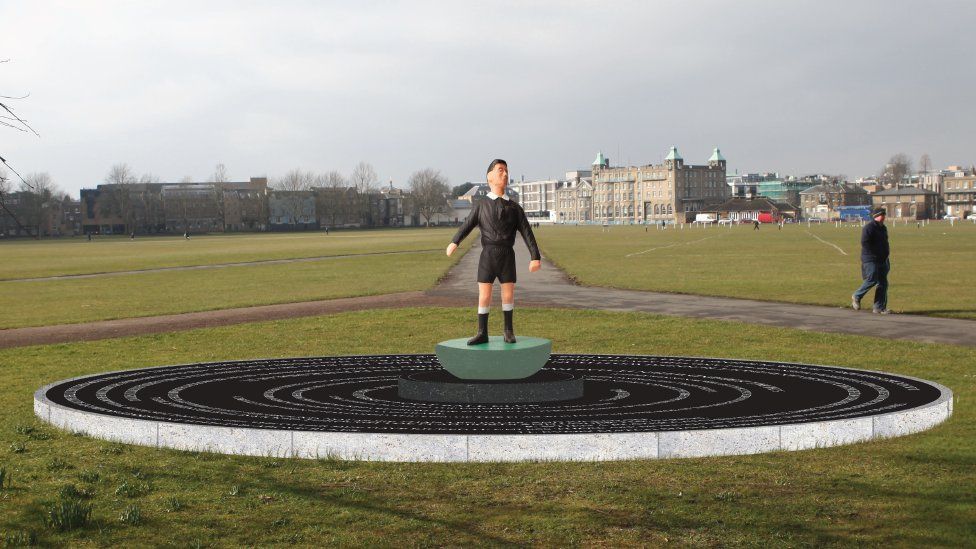
Did you know that the first game of Association Football was played on Parker’s Piece in 1863 following the rules being written at Trinity College, although a form of football had been played in the town since 1579.
The Fitzwilliam Museum and Kettle’s Yard gallery are well worth a visit or why not stroll through the botanical gardens or pop into one of the 31 colleges for a wander or a more organised tour.

